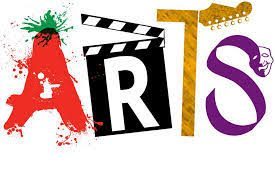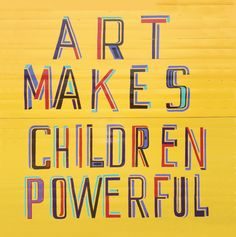Being half-way through this module, I can see my skills widening and my acknowledgement of the arts within primary schools being a vital area of teaching, becoming more enabled to the interconnections being made through-out, to other areas of the arts but also to the wider curriculum. Sometimes the arts don’t overlap and that is okay, whereas linking them to other areas of the curriculum always seems apparent.
This week I started in drumming within our music workshop, which is something I haven’t overly partaken in even through my own schooling experience. I pondered the idea of being able to keep co-ordination and timing, or even to the gripping of drumsticks.


Holding the sticks felt weird at first, do I hold them like a pencil? Do I hold them tightly or loosely? As I got to grip with them, we began to look at reading music on the screen. Reading the music, I applied skills of analytical thinking, to work out the beats and the timings, identifying to myself the way reading music can be introduced into a classroom, through using a more familiar image, such as shapes to then translate into musical notes at a later time. Being able to read music is not a key part of the curriculum, however, it enables children to make connections in areas of literacy as they read the music in beats, like letters or to count how many are on the screen.
Inspired by a range of stimuli and working on my own and/or with others, I can express and communicate my ideas, thoughts and feelings through musical activities.
EXA 0-18a / EXA 1-18a / EXA 2-18a (Scottish Government, 2017)
As we use these methods in class we can in-fact, use everyday materials around the classroom to play on. Showing how you do not need to have a physical drum in your presence to make drumming part of your lessons in a classroom.
“art enquiry processes to promote a deep and holistic understanding of concepts and ideas that matter to our students…” (Marshall, J. 2014)
Using drums and creating a rhythm, exploring that pulsing beat and link to areas of the curriculum through the idea of syllables as a rhythmic pattern, where this idea of the beats linking to teaching literacy can make it more relatable for children. They can start with physically clapping the beats moving onto using drumming sticks, helping them get used to the music before moving on to creating the pieces of music with physical materials.
https://www.youtube.com/watch?v=RdZChLRWHJs
Music can also be used in active lessons such as PE to keep beats and using their feet as the drumming tools. The cross-curricular work with music furthers a child’s learning but also looks at the collaborative skills that come into force as they go along with the music in times. You can make each individual child have a role and feel valued as they play the music.
Within Visual arts this week the focus was on printing. Using our own creations and protests to create a bold presentation of our thoughts and words. This focus can also link to literacy and enable children to learn about issues key to them and that they want to shout loudly and express themselves about.
“Print-making activities provide additional opportunities for extending the students range of expression developing awareness of the inter-relationship between shapes and colours…” (NCCA, n.d.)




Working in groups enabled collaborative thinking to have an idea and a focus. Identifying current issues and protesting about what can be done, which we chose the idea of rising sea levels and climate change. Through printing, we are being able to enable children in making thinking visual.
Linking in my own learning with key artists and why printing is a key method in education I examined the history through the book of kells. This is a key-way to begin the topic with children in, linking in their learning through history. This religious book opened up the idea of decorative texts within and making literation bold and in colour with a pattern. This illustrated work of prints enabled the early works of a printing press and a history of the connection of arts to our literacy. The works of printing enabled the world to become more literate.
This history can lead to children being interested and taking up their own pieces of printing. Teaching this can be used as an aid to make children more literate through art lessons, leading to a refresh for teachers as they break out of their routinised ways of teaching.
Identifying key artists to show children the modern ways of printing their keywords and enabling protesting, can be done through Bob and Roberta smith. These artists enable the thinking and creativity that can be used to create statements of protest. Teaching this topic can give children in the class a voice and giving them their agency in the world and to their work. Marshall (2014) points out the way that through different art processes can allow the artist learner to think about the topic more deeply expansively and personally.


This allows them to create responses to their thinking upon the topics they are discussing.
Linking through the art integration process in both these inputs today as we can focus upon literacy and also giving children agency in life. As the music links into the curriculum with PE or literacy, our visual arts can link through literacy of history. These art integrations of today have “reached beyond interpretation of academic topics to explore and interpret life centred issues…” (Marshall, 2014) The powerful and bold inputs of art showed a strong impact from big word printing to make a statement or hitting the drums loudly to explore beats, in making children know their expressions matter.
References
Scottish Government (2017) Curriculum for excellence: expressive arts. Experiences and Outcomes[Online] available: https://education.gov.scot/Documents/expressive-arts-eo.pdf [accessed on: 16/10/2019]
Marshall, J (2014) Transdisciplinary and Art Integration: Toward A New Understanding of Art-Based Learning Across the Curriculum, Studies in Art Education Vol. 55(2) pp.104-127
NCCA, (n.d.) Visual Arts [online] available:https://www.ncca.ie/en/junior-cycle/subjects-in-development/visual-art [accessed: 16/10.2019]
Mind Meets Music (2016) Teaching literacy through music in Grand Rapids[online] available: https://www.youtube.com/watch?v=RdZChLRWHJs [accessed:16/10/2019]


